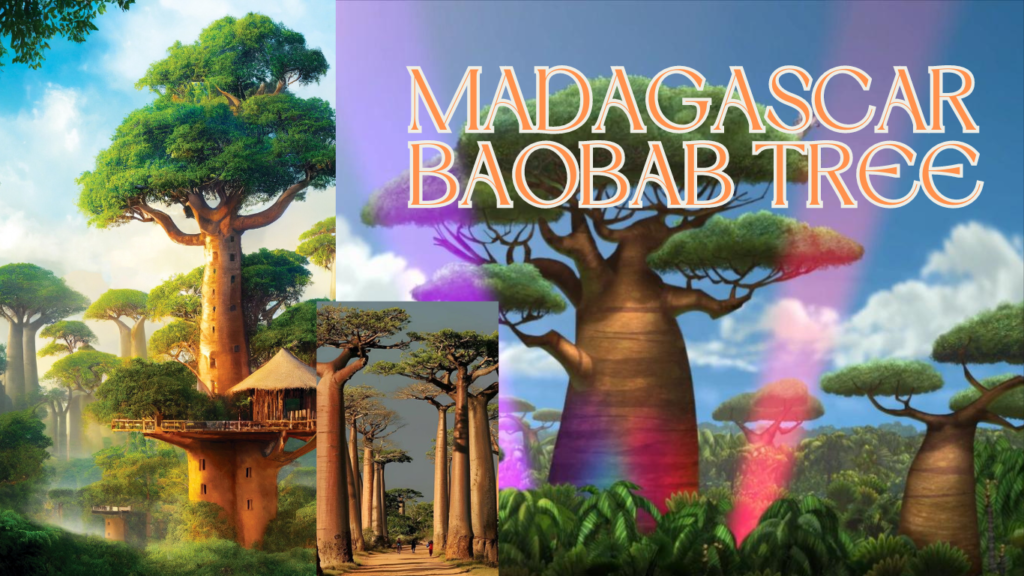Imagine a world where trees look like they’ve been pulled straight out of a fantasy book. In the heart of Madagascar, an island off the coast of Africa, grows such a tree: the Madagascar Baobab Tree. It’s not just any tree—it’s a colossal, ancient, and incredibly unique wonder of nature that fascinates scientists, adventurers, and storytellers alike. Let’s dive into the magical world of the baobab tree and discover why it’s so special.

A Giant Among Trees
First, let’s talk about its size. The Madagascar Baobab Tree can grow to be as tall as a 10-story building! Its trunk is incredibly thick and can be as wide as a small house, sometimes measuring up to 30 feet in diameter. Imagine standing next to a tree so wide that you and all your friends, holding hands, would need to form a big circle around it to give it a hug. That’s how enormous it is!
But the baobab’s size isn’t just for show. This massive trunk has an important job—it stores water. Madagascar often has long dry seasons where it doesn’t rain for months. The baobab tree, like a wise old giant, stores water in its spongy wood. This way, it can survive the harsh, dry periods. It’s like the tree has a built-in water tank!
An Upside-Down Wonder
Now, let’s look at its shape. The Madagascar Baobab Tree looks like it’s been planted upside down. Its branches stretch out like roots reaching towards the sky, giving it a unique and somewhat strange appearance. This unusual look has inspired many legends and stories. Some people say that the gods planted the baobab upside down as a punishment for its pride. Others believe that its roots are up in the air to catch rainwater more effectively.
During the dry season, the baobab sheds all its leaves, making its bare branches look even more like roots. But come the rainy season, it bursts into life with bright green leaves and sometimes even flowers. These flowers are large, white, and very fragrant, attracting bats and other nocturnal creatures that help pollinate them.
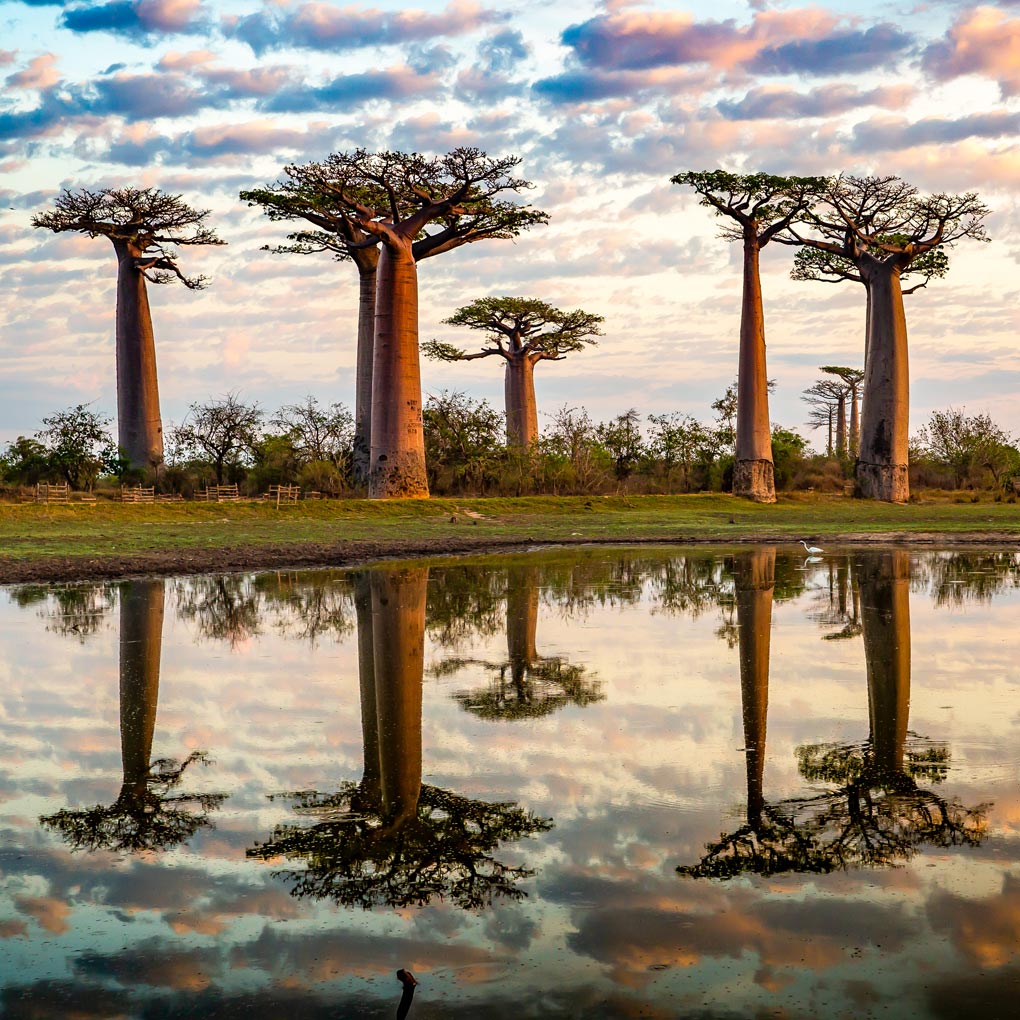
A Tree of Life
The Madagascar Baobab Tree isn’t just a big, old, funny-looking tree. It plays a crucial role in its ecosystem. It’s often called the “Tree of Life” because it supports so many forms of life around it.
For starters, it provides food. The baobab produces a fruit that looks like a giant, fuzzy green bean. Inside this fruit is a pulp that is packed with vitamins, especially vitamin C. It tastes tangy, a bit like lemon-flavored candy. People in Madagascar and other parts of Africa eat this fruit, and they also make it into a powder to add to their food. It’s super healthy and gives them lots of energy.
Animals love the baobab fruit too. Baboons, elephants, and other creatures munch on the fruit and leaves. Even the seeds inside the fruit are useful. People roast them to make a tasty snack, or they press them to extract baobab oil, which is great for cooking and even for skin care.
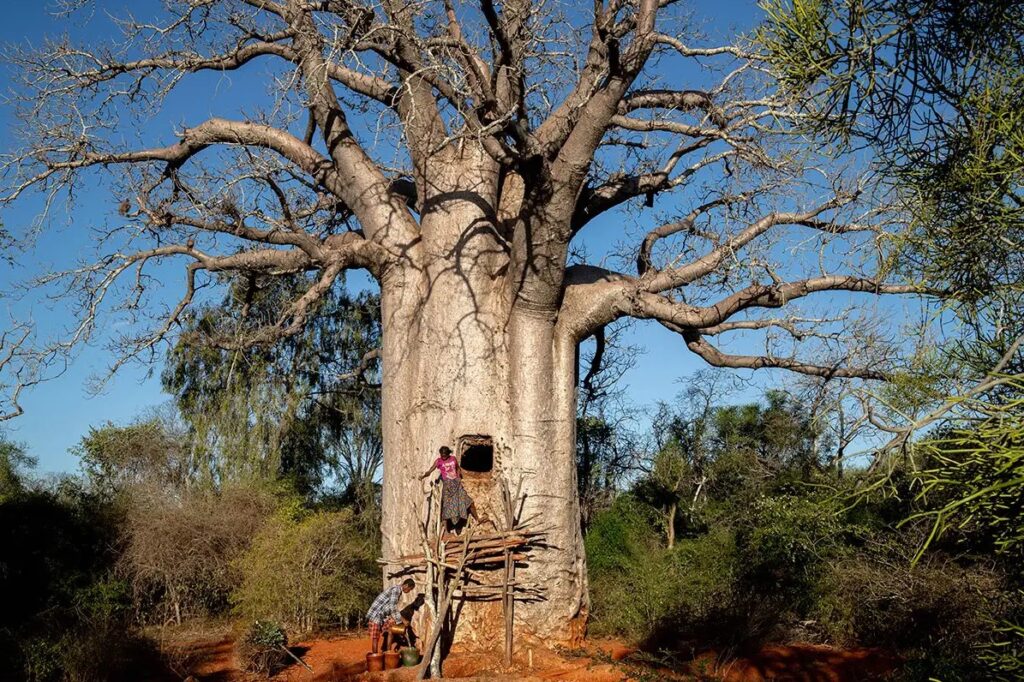
A Natural Water Bottle
Remember how we talked about the baobab storing water in its trunk? This isn’t just a clever trick for the tree to survive. It also helps people and animals. In times of drought, when there’s no water to be found, people can tap into the baobab tree to get water. It’s like having a natural water bottle in the middle of the forest. This water can be a lifesaver in tough times.
Medicine Chest of the Forest
The Madagascar Baobab Tree is also known for its medicinal properties. The leaves, bark, and fruit of the baobab have been used for centuries to treat various ailments. The bark is used to make a drink that helps with fevers, while the leaves can be made into a paste to soothe skin conditions. The fruit pulp is not just tasty but also helps boost the immune system and improve digestion. So, the baobab is like a giant medicine chest standing tall in the forest.
Legends and Stories
Because the baobab tree is so unique and important, it’s no surprise that it’s surrounded by many legends and stories. One tale from Madagascar tells of a baobab that was once a beautiful, proud tree. It boasted about its beauty to the other trees, which made the gods angry. As a punishment, the gods uprooted it and planted it upside down to teach it a lesson in humility.
Another story says that the baobab was the first tree to appear on Earth. It loved its home so much that it refused to leave. As other trees started to grow and spread across the land, the baobab clung to its spot, its roots reaching down deep and its branches spreading wide to touch the sky.
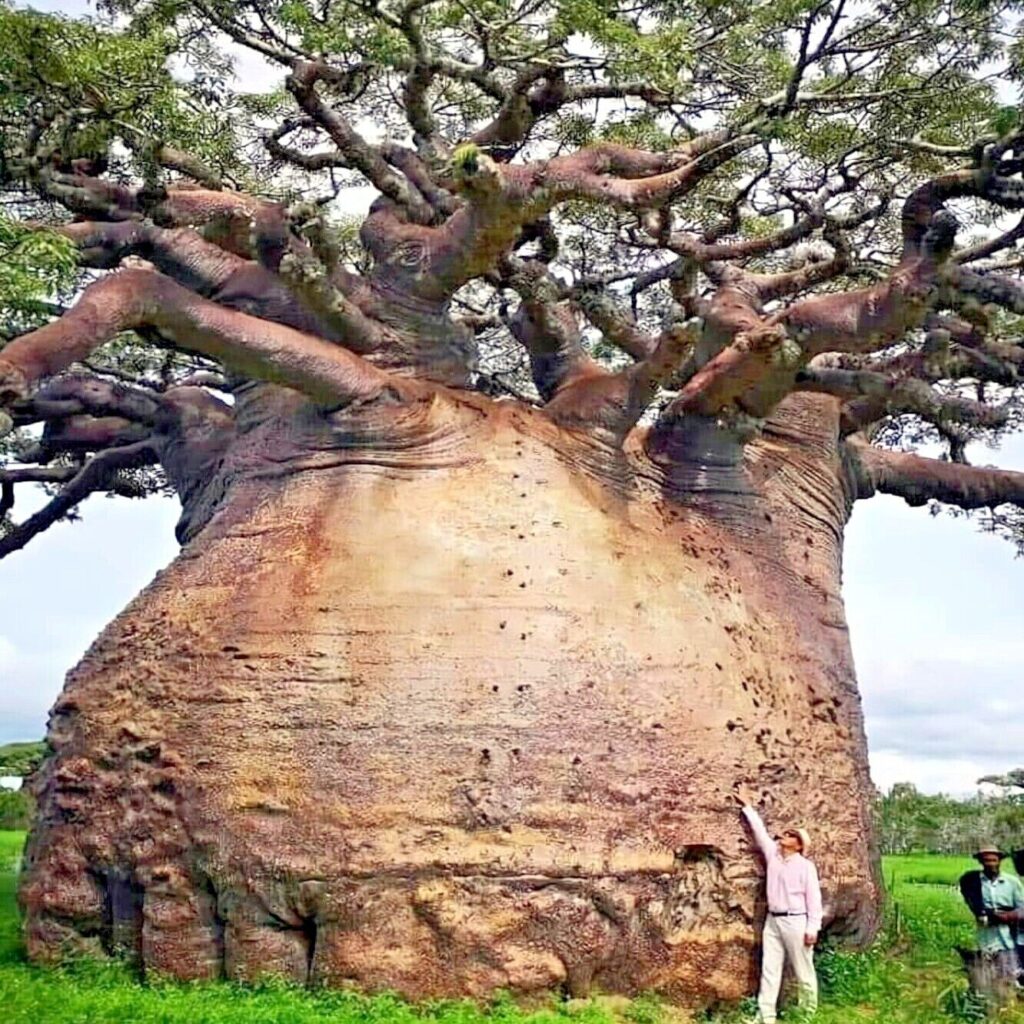
The Future of the Baobab
Despite its toughness and resilience, the Madagascar Baobab Tree faces challenges. Climate change and deforestation threaten its survival. As the planet warms and weather patterns change, the dry seasons can become even longer and harsher, making it difficult for young baobab trees to grow. Additionally, as forests are cut down for agriculture and development, baobabs lose their habitat.
Conservation efforts are crucial to protect these magnificent trees. Scientists and environmentalists are working to understand the baobab better and find ways to help it survive. They’re studying its growth patterns, its water storage capabilities, and its role in the ecosystem to develop strategies to conserve it.
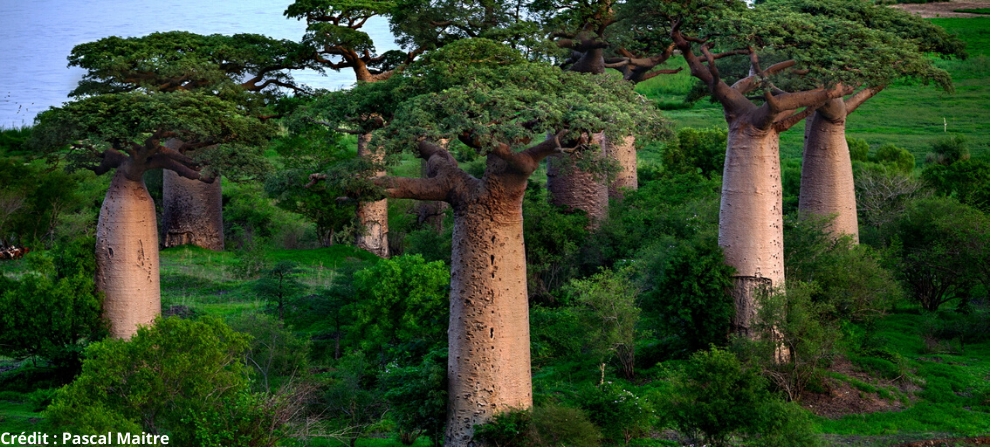
How You Can Help
You might be wondering how you, as an 11-year-old, can help protect the Madagascar Baobab Tree. There are actually several things you can do!
- Learn and Share: The more you know about the baobab tree, the more you can share with others. Talk to your friends, family, and teachers about what you’ve learned. Awareness is the first step to conservation.
- Support Conservation Groups: There are many organizations working to protect the baobab and other endangered species. You can support them by donating, participating in their programs, or even just spreading the word about their work.
- Be Environmentally Friendly: Small actions in your daily life can make a big difference. Reduce, reuse, and recycle to help protect forests and natural habitats. Use less water, save energy, and support sustainable products.
- Plant Trees: If you have the chance, plant trees in your community. While you might not be able to plant a baobab, planting any tree helps the environment and supports the fight against climate change.
A Tree to Remember
The Madagascar Baobab Tree is truly one of nature’s wonders. With its towering presence, its life-giving fruits, and its ability to store water, it stands out as a symbol of resilience and generosity. It’s a reminder of the incredible diversity of life on our planet and the importance of protecting it.
So, next time you think of trees, remember the baobab. Think of its giant trunk, its upside-down branches, and its sweet, tangy fruit. Think of the life it supports and the stories it tells. And remember that even as an 11-year-old, you have the power to make a difference and help protect these amazing trees for future generations to admire and enjoy.

